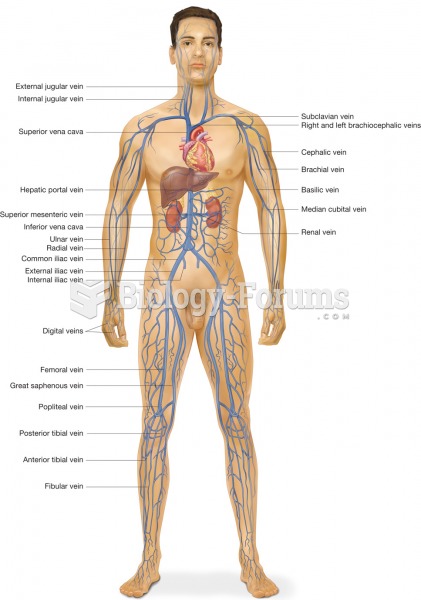Answer to Question 1
Results of research studies point toward a weight-regulating mechanism (WRM) in the human body that has a setpoint for controlling both appetite and amount of fat stored. The setpoint is hypothesized to work like a thermostat for body fat, maintaining fairly constant body weight, because it knows at all times the exact amount of adipose tissue stored in the fat cells. Some people have high settings; others have low settings.
If body weight decreases (as in dieting), the setpoint senses this change and triggers the WRM to increase appetite or make the body conserve energy to maintain the set weight. The opposite also may be true. Some people have a hard time gaining weight. In this case, the WRM decreases appetite or causes the body to waste energy to maintain the lower weight.
Every person has a certain body fat percentage (as established by the setpoint) that the body attempts to maintain. The genetic instinct to survive tells the body that fat storage is vital; therefore, the body sets an acceptable fat level. This level may remain somewhat constant or may climb gradually because of poor lifestyle habits.
Answer to Question 2
Eating disorders are medical illnesses that involve crucial disturbances in eating behaviors thought to stem from some combination of environmental pressures. These disorders are characterized by an intense fear of becoming fat, which does not disappear even when the person is losing weight in extreme amounts.
Most people who have eating disorders are afflicted by significant family and social problems. They may lack fulfillment in many areas of their lives. The eating disorder then becomes the coping mechanism to avoid dealing with these problems. Taking control of their body weight helps them believe that they are restoring some sense of control over their lives.
Anorexia nervosa and bulimia nervosa are common in industrialized nations whose society encourages low-calorie diets and thinness. The female role in society has changed rapidly, which makes women more susceptible to eating disorders. Although frequently seen in young women, eating disorders are most prevalent among individuals between the ages of 25 and 50 . Surveys, nonetheless, indicate that as many as 40 percent of college-age women are struggling with an eating disorder.







